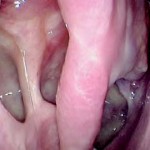Chronic Rhinosinusitis with or without nasal polyps (CRSwNP or CRSsNP)
Epidemiology and predisposing factors
Summary
The overview of the currently available literature illustrates the paucity of accurate information on the epidemiology of CRSsNP and CRSwNP, especially in European countries, and highlights the need for large-scale epidemiologic research exploring their prevalence and incidence. Only by the use of well standardized definitions for CRSs and wNP, and well-defined inclusion criteria for epidemiologic research, will it be possible to obtain accurate epidemiologic data on the natural evolution of these diseases,
the influence of ethnic background and genetic factors and the factors associated with the disease manifestation.
Introduction
Chronic rhinosinusitis with (CRSwNP) and without nasal polyps (CRSsNP) in its many forms, constitutes one of the commonest conditions encountered in medicine and may present to a wide range of clinicians from primary care to accident and emergency, pulmonologists, allergists, otorhinolaryngologists and even intensivists and neurosurgeons when severe complications occur.
Before:
After:
Ethmoidectomy (polyps removal) using endoscope and shaver
Nasal endoscopy. Large nasal polyps










